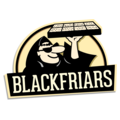Wilsontown Ironworks & Heritage Project

In early 1700 it was known by the name Forkens, the change of designation having taken place when the discovery of ironstones in the surrounding hillsides led the brothers Wilson to embark on their epic adventure of establishing an iron , manufactory on the banks of the Mouse Water.
There are three men outstanding in the first part of this engaging narrative, the brothers Robert, John and William Wilson, natives of the parish of Carnwath as were their forebears for many generations.
Robert who was the eldest of the three had been content to remain at home looking after the family estate of Cleugh near Wilsontown, which in those days was very extensive.
At the discovery of ironstone in the purchased lands Robert at once proposed to his brothers that it would be an advantageous venture to set up an Iron manufactory on the estate and suggested that as he was living on the spot the management of the proposed works should be entrusted to him and that John and William out of the co-partners in London should provide the money. This proposal is said to have appealed to John but not to William.
Ultimately William's objections were over-come and the work of planning and erecting an iron foundry with its blast furnace and blowing engine and all the necessary appurtenances, including workshops and offices as well as the building of dwellings for the large number of workpeople which would be employed in the undertaking, and a residence for the manager was commenced.
From now the business was carried on by John Wilson and his two sons, William and John, with renewed energy under the firm name of Wilson and Sons, and many important additions and improvements to the plant were carried out by them.
However the site closed around 1815
Early in the year of 1821, a purchaser came forward in William Dixon, of Govan Colliery and Calder Iron Works, a man known throughout the length and breadth of the land as a pioneer in all that pertained to coal and iron. In Edinburgh at which the works were sold there were only two intending purchasers in attendance and both hailed from Glasgow. One was William Dixon whose object was to purchase the works and restart them, and the other was an engineer whose object was to purchase the works and break them up; and on looking back on all that has happened since it would appear to be a fortunate circumstance that the successful offerer was the well known pioneer himself.
Operations were continued at the blast furnaces until the years 1842 but in that year, described as a time of the most gloomy and unparalleled unenviable distress which had ever before occurred in the country, they were blown out, never to be lit again, and the works were finally broken up in the years 1846 and 1848. These years formed part of the decade, which was aptly described and known for long afterwards as the hungry 'forties.
Thus after a period of three score years, the great adventure of iron making, begun by the Wilsons of Wilsontown with such high promise and great expectation, came to an untimely end,
From this time onwards, from an industrial outlook, Wilsontown became purely a mining community.
Thanks to the good people of Forth and Wilsontown for help in providing this article.Extracts from 'Romance of Wilsontown." By P.M Ritchie Managing Director of Wm. Dixon Coal Co.
Heritage Project

Started in 2011 this project undertaken by the Forestry Commision Scotland has transformed the Ironworks area into a pleasant colouful journey back in time.
Why not pay a visit to the Heritage Site Picture Album.
Information on this project can be found at The Forestry Commissions Website.
Special thanks to the Forestry Commision Scotland for the use of the above image





